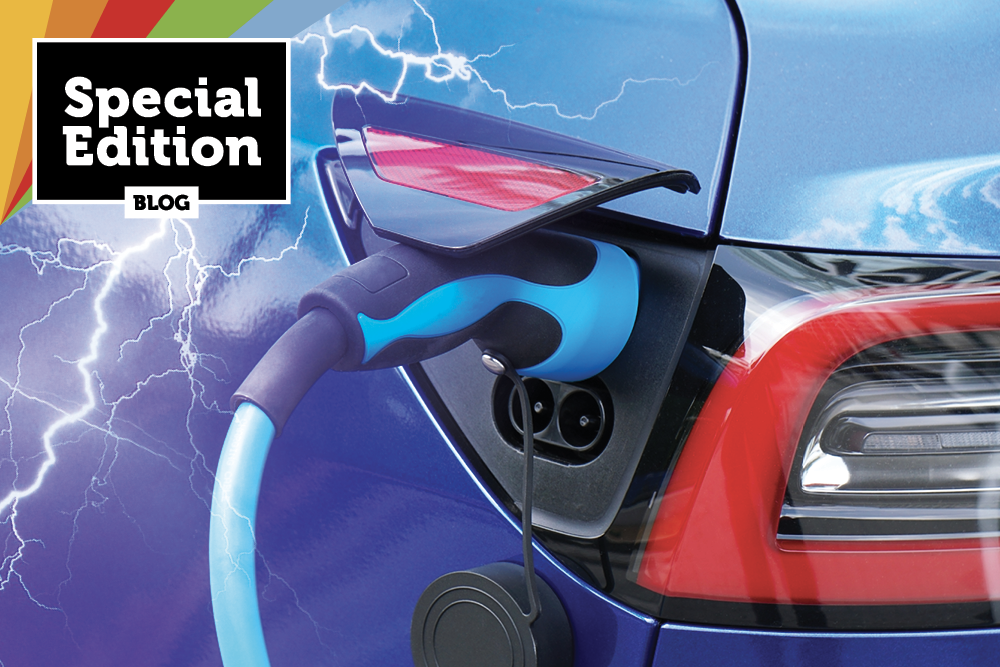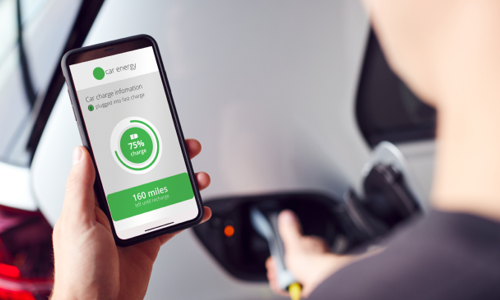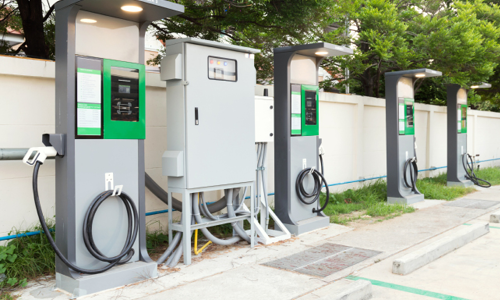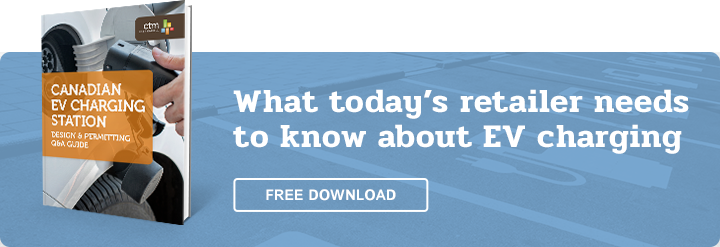3:00 pm
E/V Chargers: How Are Electric Cars Disrupting Gas Station Design?

CTM shares findings from a recent webinar presented to the CIPMA
CTM Design recently participated in a webinar presented to the Canadian Independent Petroleum Marketers Association by ChargePoint – one of North America’s largest providers of EV charging technology.
The topic was one of great importance to companies like ours that design infrastructure for retail fuel service – and also to our clients who own and operate fuel stations and retail businesses across Western Canada and Ontario.
The adoption of Electric Vehicles (EVs) is about to surge. There will be a significant need for commercial charging infrastructure. This will have a profound effect on the retail fuel industry. It will likely disrupt the current business model while presenting exciting new opportunities. Businesses need to be ready to adapt.
The Future of Mobility is Electric

The transition from combustion automobile engines to electric vehicles is well underway. As more and more EVs are hitting the highways, the industry is taking notice. The following points stood out in the webinar:
By 2040, it is projected electric vehicles will represent 55% of the global light-duty market (over 60 million vehicles), according to Bloomberg New Energy Finance.
As an aside, the Government of Canada has set ambitious targets for the sales of zero-emission vehicles (ZEVs). By 2025, they are counting on 10% of all light-duty vehicles to be ZEVs. This jumps to 30% by 2030 and 100% by 2040!
Several new EVs are being called game-changers: In Western Canada where the truck is king, the recent introductions of the Ford F-150 Electric and Rivian R1T are turning heads. Porche, BMW, and other luxury brands are trying to keep pace with Tesla. Even Ford has launched an EV version of its iconic Mustang (the Mach-e). As EV sales increase, prices are sure to come down.
New EV Charging Business Models

Charging an EV is not as quick as filling up a tank of gas. With current A/C (Level 2) charging technology, you will get approximately 25 miles (40 km) of Range Per Hour (RPH) of charging. Yet, more and more EVs are now equipped for DC Fast Charging. Today’s DC Fast Charging technology is capable of charging many EV batteries to 80% within 20-30 minutes! That’s a charge rate of 100+ RPH. For this reason, businesses that can accommodate longer customer dwell-time and ample parking may initially be the most likely candidates for EV charging stations (eg. shopping centres, restaurants, or convenience stores with a QSR or hot food offering).
In the webinar, two business models were identified for EV charging operations.
1. Site Host Owned & Operated
With an upfront investment in charging infrastructure, site owners will shoulder the risk, yet have the potential to capitalize on a huge upside. Owners have the flexibility to set pricing and collect revenue from fueling, control the customer experience and receive tax benefits from equipment depreciation. Much in the same way the system works for traditional retail fuel businesses.
2. Third-Party Owned & Operated
A business could partner with a third party that would install, own and operate the charging station on their premises. The third party would assume the risk for installation and take all of the profit, while the business may be required to pay a small rental fee. Businesses would benefit from the customer traffic, without incurring upfront investment. It is a low-risk model, with a relatively flat upside.
ROI on an EV Charging Investment
On the webinar, we learned that there are several key market variables that will determine how quickly a station owner can generate ROI.
- Utilization: Staying on top of EV adoption rates in a specific market will be critical. For example, adoption will likely be higher in urban areas than in rural areas. That said, there may be an opportunity in rural communities that are tourist destinations or are located along key travel corridors. According to ChargePoint, “As utilization increases, financial impact decreases.”
- Charge Rate: Demand may be influenced by how quickly it takes to charge an EV. Today, the average charger is 50kW. That is expected to increase to 150+ kW in the coming years.
- Charge Amount (kWh): Sales will be influenced by how much energy is required for each charge session, and the duration of the charge. A lot of factors come into play: how much a battery needs to be charged (a local top-up vs. a road-trip fill-up, the fast-charge rate, and proximity to high-density housing).
- Driver Pricing (charging fees): Today, customers pay according to the time of their charging session (eg. $0.30/minute). Currently, Measurement Canada does not permit charging by the kWh, but this is being considered.

EV Charge Station Site Evaluation
Choosing the right site is crucial to whatever business you are in. Sites for EV charging stations have some very specific requirements. This includes:
- Parking availability
- Electrical capacity
- Location of power lines
- Location (commuter, corridor, neighbourhood, multifamily)
- Traffic count/flow
As mentioned earlier, the charge-time and opportunities for customers to occupy their time while vehicles are being charged is another consideration in site selection (ie. proximity to restaurants/ shopping).
A Time of Great Opportunity
At CTM Design, we believe this is a time of significant opportunity for corporations and entrepreneurs who want to be at the forefront of developing EV charging infrastructure. We are committed to partnering with both technology manufacturers and owner/operators to ensure infrastructure is designed to meet all building code and permitting requirements.
Making the transition to EV technology won’t happen overnight. Adapting may require some agility on behalf of traditional fuel suppliers. At the same time, it will undoubtedly open the door to new business models. We look forward to seeing where this exciting road leads us.
